
The Japan Maritime Self-Defense Force, abbreviated JMSDF, also simply known as the Japanese navy, is the maritime warfare branch of the Japan Self-Defense Forces, tasked with the naval defense of Japan. The JMSDF was formed following the dissolution of the Imperial Japanese Navy (IJN) after World War II. The JMSDF has a fleet of 154 ships, 346 aircraft and 50,800 personnel.
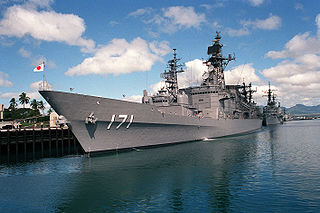
The Hatakaze class of guided-missile destroyers is a third generation class of vessels in service with the Japan Maritime Self-Defense Force (JMSDF). They were the first of the JMSDF's ships to have gas-turbine propulsion.

JS Chōkai (DDG-176) is a Kongō-class guided missile destroyer in the Japan Maritime Self-Defense Force (JMSDF). Chōkai was named after Mount Chōkai. She was laid down by IHI Corporation in Tokyo on 29 May 1995 and was launched on 27 August 1996. Commissioning happened on March 20, 1998.

The Special Boarding Unit is a special forces unit established by the Japan Maritime Self-Defense Force on March 27, 2001, in response to a spy ship incursion that had taken place on the Noto Peninsula in 1999. The unit was created to perform similar roles to those undertaken by American Navy SEALs and the British SBS. Its structure is based on that of the SBS. It is based in Etajima, Hiroshima.

JS Haruna (DDH-141) was the lead ship of the Haruna-class helicopter destroyer of the Japanese Maritime Self Defense Force.

JS Makinami (まきなみ) is the third vessel of the Takanami-class destroyers of the Japan Maritime Self-Defense Force (JMSDF).

JS Sazanami (さざなみ) is the fourth vessel of the Takanami-class destroyers of the Japan Maritime Self-Defense Force (JMSDF).
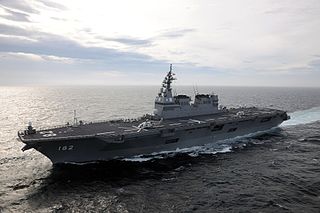
JS Ise (DDH-182) is a Hyūga-class helicopter destroyer of the Japan Maritime Self-Defense Force (JMSDF). It is the second ship to be named Ise, the first being the Imperial Japanese Navy World War II-era battleship Ise.
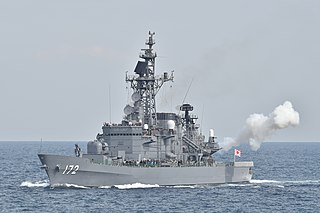
JS Shimakaze (DDG-172/TV-3521) is the second ship of the Hatakaze-class guided missile destroyers built for the Japan Maritime Self-Defense Force (JMSDF). The ship was reclassified as training ship in 2021.
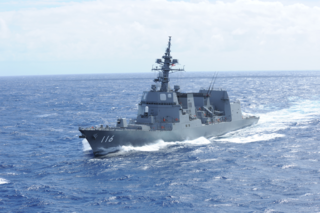
JS Teruzuki (DD-116) is the second ship of Akizuki-class destroyers. She was commissioned on 7 March 2013.

JS Suzutsuki (DD-117) is the third ship of Akizuki-class destroyers. She was commissioned on 12 March 2014.
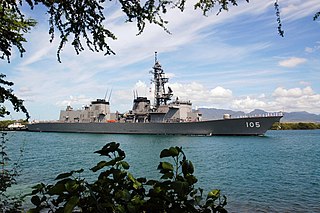
JS Inazuma (DD-105) is the fifth ship of Murasame-class destroyers. She was commissioned on 15 March 2000.

JS Samidare (DD-106) is the sixth Murasame-class destroyer of the Japan Maritime Self-Defense Force (JMSDF). She was commissioned on 21 March 2000.

JS Yūgiri (DD-153) is an Asagiri-class destroyer of the Japan Maritime Self-Defense Force.
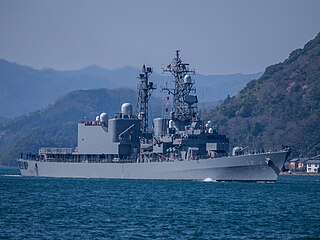
JS Setogiri (DD-156) is an Asagiri-class destroyer of the Japan Maritime Self-Defense Force.

JS Hamagiri (DD-155) is an Asagiri-class destroyer of the Japan Maritime Self-Defense Force.

JS Setoyuki (DD-131/TV-3518) was a Hatsuyuki-class destroyer of the Japanese Maritime Self-Defense Force.

JS Asayuki (DD-132) was a Hatsuyuki-class destroyer of the Japanese Maritime Self-Defense Force.

JS Uraga (MST-463) is the lead ship of the Uraga-class mine countermeasure vessels.

JS Bungo (MST-464) is the second ship of Uraga-class mine countermeasure vessel.




















